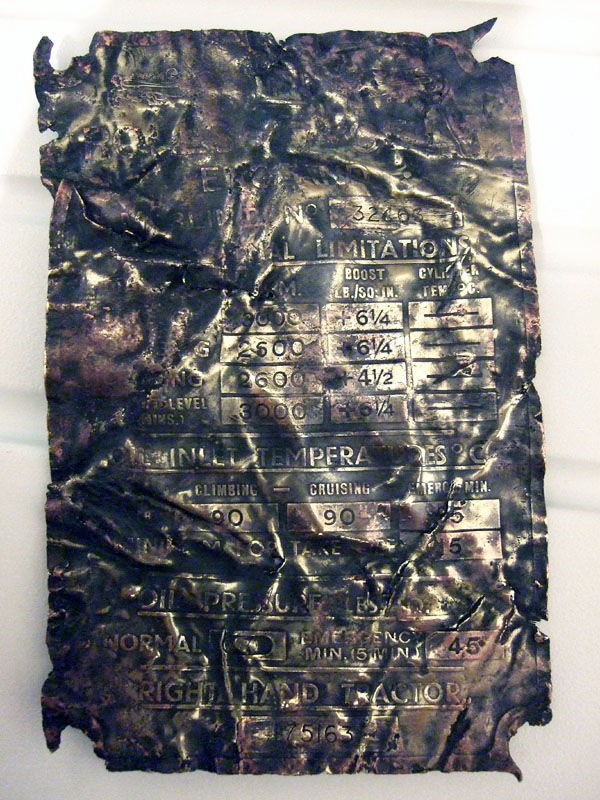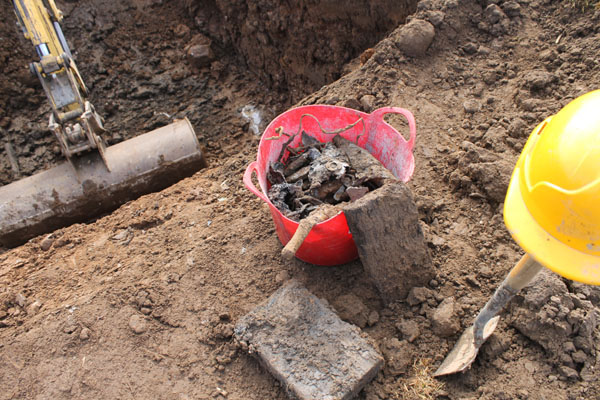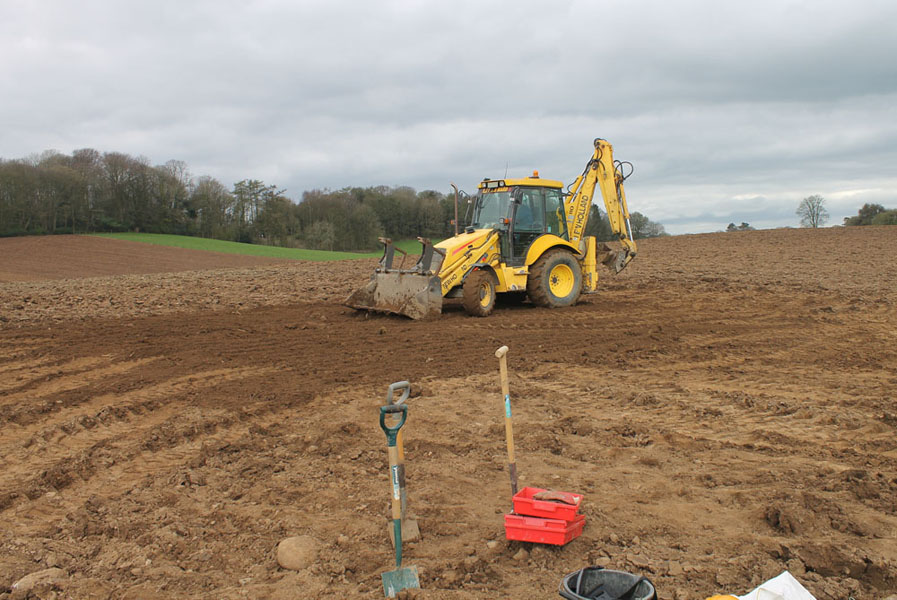 |
Defiant T3955 - Nether Kellet
15th May 1941 |
Last
updated: 05.12.2017

|
256 Squadron Defiant I
|
|
| Type |
Serial |
Unit |
Base |
Duty | Crew |
| Defiant I |
T3955 |
No. 256 Squadron |
Squires Gate |
Night practice flight | 2 |
The
aircraft involved was an RAF Boulton Paul Defiant I, Construction
number 495, built under contract 34864/39 and delivered to No. 19 M.U.
(maintenance Unit) on 5th March 1941 with the RAF Serial No. T3955. On
the 10th April it was allocated to No. 256 Squadron, based at Squires
Gate near Blackpool and given the Squadron code letters JT-R. The
Defiant was a pre-war designed Interceptor aircraft intended to attack
enemy bomber formations and was armed with a powered dorsal turret,
equipped with four 0.303 in (7.7 mm) Browning machine guns, requiring a
gunner in addition to the pilot. At the time of its loss, Defiant T3955
had only completed 39 flying hours. On the night of the 14th / 15th May
1941, T3955 was being flown by Sergeant P.J. Taylor accompanied by his
air gunner, Sergeant E.R. Fremlin RNZAF on a night practice flight. The
aircraft crashed 01:45 hours on the 15th - the cause being officially
recorded as "after losing control due to inexperience in instrument
flying in poor visibility at night". The aircraft dived vertically into
the ground and was totally destroyed by the impact and ensuing fire,
with both crew being killed instantly.
 |  |
| Sergeant P.J. Taylor | Sergeant E.R. Fremlin |
| Name | Age | Position | Fate |
| Sgt. Peter John Taylor | 20 | Pilot | K. |
| Sgt. Erle Rutherford Fremlin RNZAF | 19 | Air Gunner | K. |
Our
initial research centred on the crash record card (Form 1180), as no
AIB report could be traced. Immediately we noted that the date on this
form may easily be misread as "15.02.41", which explains why other
sources have mis-quoted the month for this incident in the past.
Blame for the crash is attributed to “bad instrument flying” by the
pilot and his O.T.U. (Operational Training Unit) assessment is
questioned as to whether it justified sending him to a night fighting
squadron. However other factors are mentioned, including the
deteriorating weather conditions on the night of the crash and the fact
that Link Trainer facilities were not yet available to the Squadron,
which no doubt contributed towards the pilot’s lack of further training
on instrument flying. Finally the possibility of an unknown mechanical
failure being a contributory factor is not ruled out. This latter
comment is interesting as one member of our group corresponded with
Taylor’s commanding officer at No. 256 Squadron several years ago and
he stated that a number of the Squadron’s Defiants had suffered major
instrument malfunctions around this time. This later proved to be due
to an identified common fault where the flexible rubber tube connecting
the engine driven vacuum pump to the artificial horizon and giro
compass was incorrectly fitted and became kinked cutting off the vacuum
supply.
The aircraft and engine were both categorised as “W”
or "write off" with fire noted on impact and although the Form 1180
indicates that parachutes were used, this again appears to be an error,
as both crew were clearly still in the aircraft on impact and were
killed instantly - though again other sources have mistakenly recorded,
in the past, that both crew bailed out and assumed they were killed due
to being too low. The Squadron’s ORB (Operations Record Book Daily
Summaries (RAF Form 540) held at the National Archives) states on May
15th that the aircraft dived vertically [into the ground] and burst
into flames. A few days later another entry on the 19th notes
that both crew member’s remains had been recovered from the crash site
and were transferred by road to the pilot’s father’s home pending
burial. It is believed personnel from the Royal Engineers carried out
the recovery and both men are buried at Mansfield (Nottingham Road)
Cemetery, Graves; 2603 (Fremlin) and 2402 (Taylor).
 |
| Our initial
survey of the crash site in far from ideal weather conditions! |
We
knew that following the crash there had been a concerted recovery
operation to locate the remains of the crew for burial and believed
that the bulk of the aircraft’s remains were also removed at this time.
Also we knew that the site had been excavated in 1983 and parts
recovered at that time included; the instrument panel, a machine gun
and parts from the engine – with some items now being on display at the
Tettenhall Transport Heritage Centre in Wolverhampton. The
approximate location of the crash site proved to be common local
knowledge, no doubt largely due to the previous excavation, but the
original crash was beyond the memory of any locals we were able to
trace. Initial grid searching using conventional metal detectors was
used to ascertain a more accurate area of impact, through plotting the
characteristic scatter of smaller surface fragments and during this,
only a few of the more substantial, contacts were actually uncovered to
confirm their identity. These included, the maker’s plate from the
Rolls Royce Merlin engine, bearing the engine number, which matched the
documentary records. Also two instrument faces, one being the cockpit
clock, though both badly corroded. After marking out the apparent
limits of the crash site, more sophisticated detecting equipment was
used, including a Foerster Magnetometer, to search for deeper and more
substantial remains and although a few deeper contacts were noted,
there was no indication that these were likely to be major
remains.
 |  |  |
| Before: Crumpled engine maker's plate, as found | After: Rolls Royce engine maker's plate cleaned and straightened | Face from the cockpit clock, with traces of the hour hand still pointing towards "1" |
For
our excavation of the site, we started by clearing the topsoil,
revealing an easily identifiable area of disturbed ground (see photos)
and almost immediately made our first find - a lead mass balance
weight probably from the rudder. This was right at the limit of the
excavation and was probably the only artefact we found in its original
undisturbed post crash location and strongly suggested a vertical
impact. The soil removed during the excavation had clearly been
heavily disturbed and there was no evidence of any discolouration
indicating burning or where parts of the aircraft had passed through.
Also noted was a layer containing substantial pockets of almost
completely oxidized powdered aluminium (Daz) at approx 3 – 4 feet
in depth, which we believed to be all that was left of parts of the
aircraft returned to the hole after the previous dig. This appeared to
be confirmed later when a visitor to the excavation proved to be the
driver of the machine used in the 1983 dig, who recalled the group
throwing quantities of airframe parts back into the whole at a point
when it was mostly filled in.
 |  |
| Initial clearing of top soil revealing tell-tale traces of "Daz". | Next layer reveals discolouration of the sub-soil |
At
approx. 5 feet in depth a small scattered cache of parts from the
aircraft was found, with a few sections of steel framework and smaller
components, all showing significant corrosion, but better preserved
than the badly oxidized parts found so far. After removing these the
excavation was checked with our detecting equipment again and it
appeared that more still remained buried. At around 7 to 8 feet below
the surface the digger uncovered several medium sized boulders,
followed by a particularly large and immovable boulder at approximately
9 feet. This appeared to have suffered impact damage, probably
explaining the severe disintegration noted on the engine components
uncovered in 1983. The soil at this depth was darkly discoloured with a
faint smell of oil and fuel and it was found that although we were
still getting metal detector readings, no significant metal objects
could be found, only a few small pieces which proved almost impossible
to pinpoint with detectors due to the heavily metal fragment / particle
contaminated clay.
 | 
|
| Approx 5 feet in depth discolouration becomes more prominent | Parts recovered from approx 5 feet depth, including 2 oak blocks |
Overall the parts found showed no relationship to each other
in the order and location they were found, but there were clues that
suggested that the 1941 recovery had been very thorough and
probably reached the limit of penetration of the aircraft. Two oak
blocks found had almost certainly been used as sheerleg pads in 1941
and there was evidence of a fairly severe post-crash fire, probably
burning underground, as fragments of shoes were found (but reinterred)
that were charred and globules of once melted aluminium were found.
Most of the parts found exhibited severe impact damage, with a 12”
section of camshaft with a section of rocker cover wrapped almost
completely around it, graphically illustrating the extreme destruction
of the engine. The Rolls Royce maker’s plate from the engine was found
on the surface and was thought likely to have been brought from deeper
down by the 1983 excavation and missed in the spoil. This was also
badly distorted and crushed and took several hours work to unfold and
conserve. Also found on the surface were two instrument faces
from the cockpit which due to their fragility could not have survived
in this position since the crash, so again were probably missed by the
1983 team. Though badly damaged and corroded, the clock face did have
the remains of the collar and stub of the hour hand still attached,
pointing towards the numeral 1, appearing to confirm approximately the
time of the crash given as 01:45 on the crash record card.
 |  |
| Careful checking of the spoil proved difficult due to considerable metal particle contamination of the soil | Site carefully reinstated at the end of the dig |
Acknowledgements:
Mr C Halhead, Russell Brown,
RAF Form 1180: Defiant T3955, 15.05.1941
256
Squadron’s ORB (Operations Record Book Daily Summaries (RAF Form 540)
held at the National Archives) entries for 15.05.1941 and 19.05.1941
Squadron
Leader E. C. Deanesly, D.F.C. (Deceased - former commanding officer of
256 Squadron), written correspondence circa 1987.
Mrs Dorothy Julia Taylor-Eggleshaw, (Deceased, sister of Sergeant P.J. Taylor), written correspondence circa 1988.
Mrs Melva Ockleston (Deceased, sister of Sergeant E.R. Fremlin), written correspondence circa 1988
Mr Peter. Taylor-Lane (Nephew of of Sergeant P.J. Taylor), email correspondence circa 2009
This page & all articles on this site
Copyright © Nick Wotherspoon 2017














